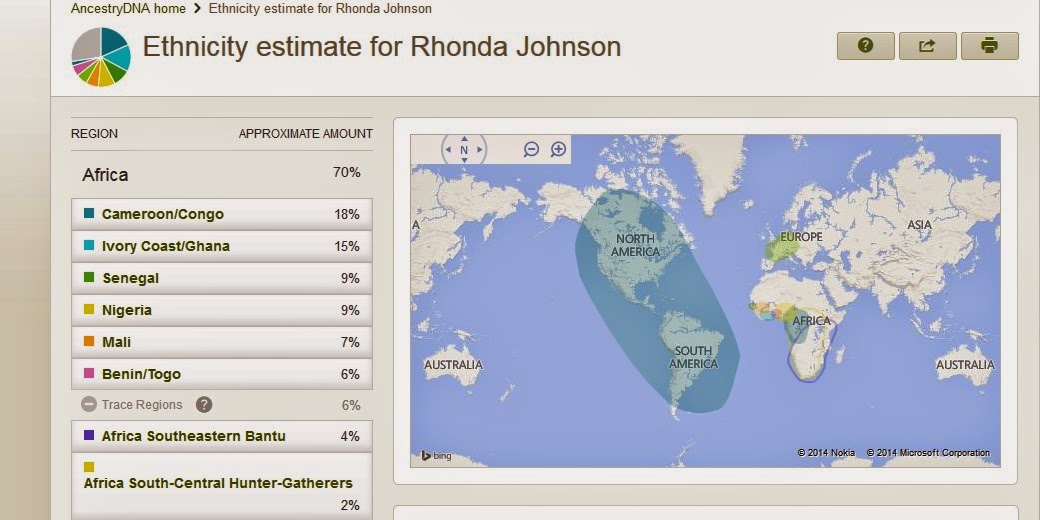Journey Into The African Past: The DNA Test Results of An African American Woman
Discovering African ancestry using SNP and STR DNA tests.
"fraudLog.com"
Viewers
Thursday, October 23, 2014
Tuesday, December 24, 2013
First African Born DNA Relative! Merry Christmas
I finally got an African match. They were born in Sierra Leone and they also have ancestry from Ghana. Very exciting. I am still waiting for AncestryDNA results!
Saturday, December 7, 2013
Sunday, November 24, 2013
23andme Transfer to FTDNA: More Questions Than Answers
So, I transferred my 23andme raw data to FTDNA. This is what I got for population finder.
| Africa (West African) | Mandenka, Yoruba | 69.79% | ±0.36% | |||||||
| Middle East | Palestinian, Iranian, Jewish, Adygei, Bedouin, Bedouin South, Druze | 8.39% | ±2.90% | |||||||
| Europe | Finnish, Russian | 21.82% | ±2.99% |
Tuesday, June 18, 2013
Information About African Origins of Enslaved In Eastern United States/Chesapeake Region
My maternal ancestors came from
Kentucky, TN, North Carolina, South Carolina, Georgia, Alabama and
Virginia. In this post, I will discuss the general preferences and
characterizes of enslaved populations in this area. According to
(Author), certain ethnic groups such as those from The Gold Coast,
Angola-Congo and Gambia were preferred for slavery due to their
“fitness” and stocky robust appearance. Slaves from
Calabar (Cameroon) from the Bight of Benin were the least preferred
because they had a higher tendency to be
depressed and commit suicide.
Such a preference for physically robust
Africans was due to the need for hard labor on rice and tobacco
fields.
From 1720-1740, Virginia and South
Carolina imported slaves from three primary regions: Biafra, Benin
and Congo-Angola. Specifically in 1730, Angola was one of the main
sources of enslaved women and men imported in many Chesapeake
colonies such as Virginia and South Carolina.
Senegambians were the most preferred
group of Africans, especially the Fulani who were thought to be great
domestic workers because they were perceived to be more intelligent
due to “mixed ancestry”. Those who worked in the fields came from
ethnic groups such as the Goree, Serer, Balante, Papel, Mande and
Temne. Igbos and Angolans were also commonly purchased for field
labor.
In Louisiana, the French had a
preference for Bambara slaves due to their skills in harvesting
important crops such as rice, maize, and millet.
Looking at my DNA Tribes African
matches, does my matches make historic sense?
References
Holloway, J. E. (1990). Africanisms
in American culture. Bloomington: Indiana University Press.
Wood, B. (2005). Slavery in colonial
America, 1619-1776. Lanham, Md.: Rowman & Littlefield
Publishers
Sunday, June 16, 2013
Subscribe to:
Posts (Atom)

















